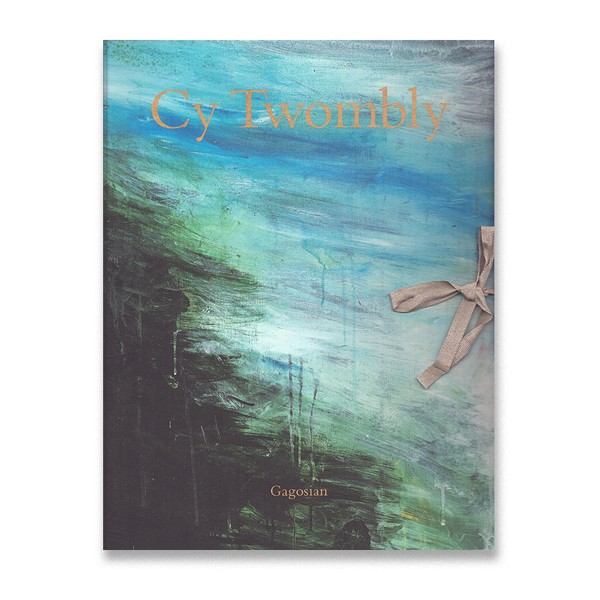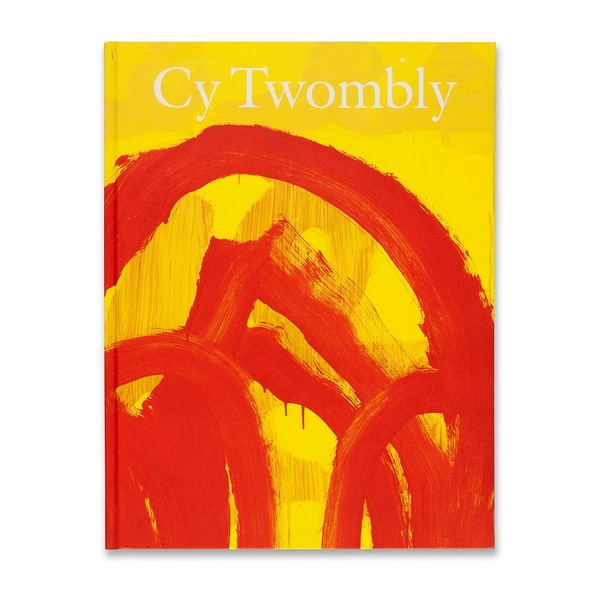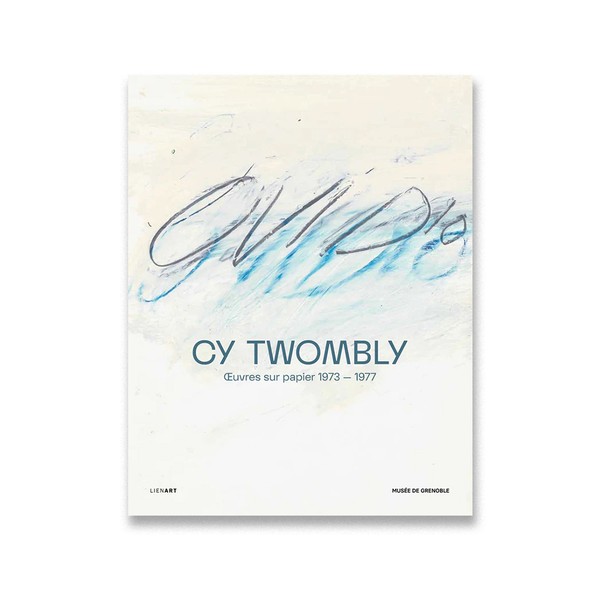Audible Silence:
Cy Twombly at Daros

Audible Silence: Cy Twombly at Daros, published on the occasion of the eponymous 2002 exhibition, includes essays by Eva Keller, Robert Pincus-Witten, Harald Szeeeman, Heiner Bastian, John Berger, Ruth Langenberg, Carol Mancusi-Ungaro, Yve-Alain Bois, Beat Wismer, Philip Fisher, and Katharina Schmidt; these essays are reproduced in both German and English.
Keller’s essay offers an overview of the artist’s biography and of the exhibition. Pincus-Witten reflects on his germinal essay “Learning to Write” (1968), attempts to define the enduring signification of Twombly’s practice, and reflects on significant exhibitions and encounters with the artist. Szeeman focuses on Lepanto (2001) and Solon I (1952), offering a gloss of the relevant history for the former, a formal reading of its “unbroken vehemence” (33), and frames the earlier painting as sharing in “this ambition of blurring and of seeking to organize studied events” (33). Bastian, as in his introductions to the catalogues raisonnés of Twombly’s paintings, focuses on connections to Stephane Mallarmé and his “silent poem all of white” (as cited on 41), treating Panorama (1955) as “a sole, unsolvable metaphor as a graphic echo” (41). Berger takes a Proustian tact, and states that Twombly “visualizes with living colors the silent space that exists between and around works” (45). Langenberg centers Arcadia (1958) as a case study in the interface between memory and expression, between visibility and speech, and between content and silence. Mancusi-Ungaro recounts visiting the Sistene Chapel with the artist during its restoration in the 1980s, and discusses her own familiarization with Twombly’s iconic hand during the restoration of his early works, understanding them as wholly deliberate. Bois links Jacques Lacan, Maurice Merleau-Ponty, and the artist, focusing on paintings produced in 1961 as “excit[ing] our raw sense of touch rather than invite the detached judgment of our eyes” (72). Wismer focuses on gray-ground works from the late 1960s and early 1970s and emphasizes their legibility and marginalia; Problem I, II, III (1966) is considered in detail, understood as an “abstract stele” (88) and connected to other artists such as Sol Lewitt. Schmidt, centering repeated invocations of Hero and Leander, discusses Christopher Marlowe and foregrounds formal analysis. Keller’s conclusory notes revolve around Suma (1980), drawing on travels to Bhutan and Tantric Buddhism to frame the painting as “motivated by ritual components” (117). Here, as throughout the volume, Twombly’s engagements with silence are understood as insistently dual if not dialectical: as Keller writes, “audible yet silent” (117).
For more on Lepanto, see the eponymous catalogues from Gagosian Gallery (2002) and the Museo del Prado (2003); for more on Hero and Leandro, see Mary Jacobus, Reading Cy Twombly: Poetry in Paint (2016). As Twombly’s work is framed as “silent” by the exhibition, those interested in contemporary theorizations of silence might consult John Cage’s Silence (1959) as well as the related secondary literature in art history and musicology alongside those sources cited in text, such as Mallarmé.
(Publication description by Jamie Danis)
Published on the occasion of the exhibition Audible Silence: Cy Twombly at Daros at the Daros Collection, Zurich (May 3 – September 7, 2002).
Audible Silence: Cy Twombly at Daros. Edited by Eva Keller, Regula Malin. Texts by Heiner Bastian, John Berger, Yve-Alain Bois, Philip Fisher, Eva Keller, Ruth Langenber, Carol-Mancusi Ungaro, Robert Pincus-Witten, Katharina Schmidt, Harald Szeemann, Beat Wismer. Published by Daros Services AG, Zurich, 2002. 162 pages, fully illustrated. German/English edition.



